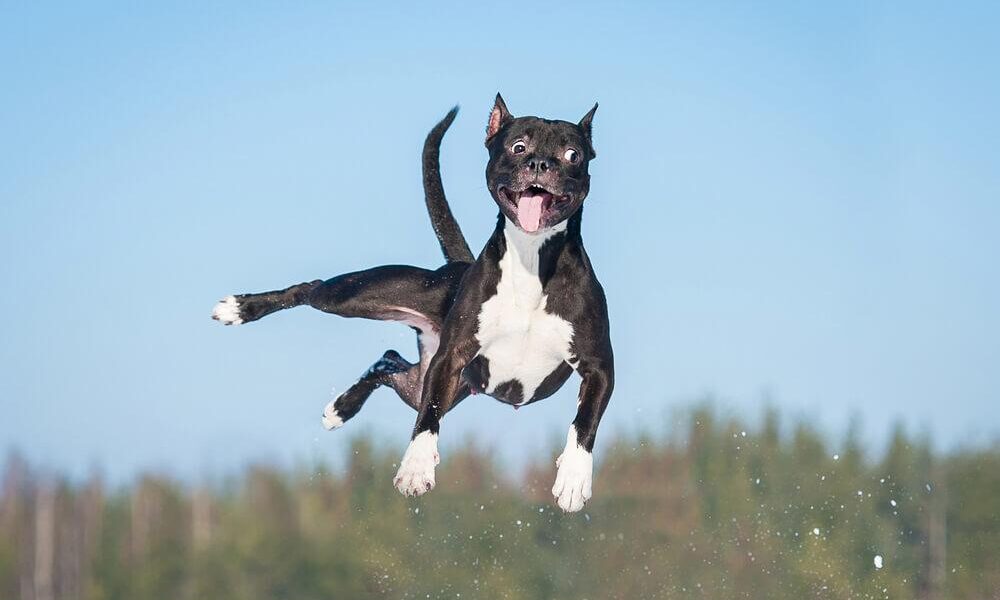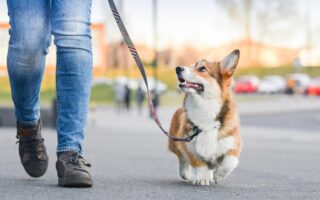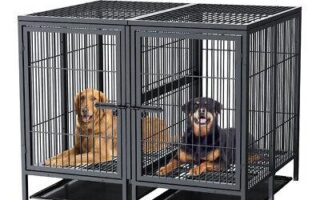Title: Taming the Tidal Wave: A Guide to Stopping Your Dog from Jumping Up
Introduction:
Picture this: you arrive home after a long day, and before you can even set down your keys, you’re met with an enthusiastic barrage of paws and a wagging tail that seems to be in a perpetual state of excitement. While your dog’s exuberance might feel like the warmest of welcomes, it can quickly turn into a challenge when it comes to managing their playful antics. For many pet owners, dog jumping is a common yet perplexing behavior that can complicate daily interactions, from greeting friends to navigating public spaces. In this article, we’ll explore why dogs jump and, more importantly, provide you with practical strategies to curtail this exuberant behavior. Let’s transform those enthusiastic leaps into calm greetings, ensuring your pup remains the lovable companion that everyone adores—without the airborne acrobatics.
Table of Contents
- Understanding the Whys Behind Dog Jumping Behavior
- Establishing Ground Rules for Positive Interactions
- Techniques for Encouraging Calm Greetings
- Reinforcing Desired Behaviors for Long-Term Success
- Q&A
- In Retrospect
Understanding the Whys Behind Dog Jumping Behavior
Dog jumping behavior is often the result of a combination of innate instincts and learned habits. When dogs jump, they are usually trying to gain attention or express excitement. This behavior can be traced back to their ancestors; dogs naturally jumped to greet each other and communicate their eagerness or affection. In a household setting, this translates to jumping on humans, which can be both endearing and problematic. Understanding this instinctual behavior helps owners discern when their furry friend is merely expressing joy versus when it’s become a nuisance.
Moreover, certain environmental factors contribute to a dog’s propensity to jump. Experiences during their formative months can reinforce this behavior—if a puppy is rewarded with attention or petting when jumping, they may continue to do so into adulthood. Consistency in training is crucial for modifying this behavior. When addressing jumping, consider methods such as:
- Teaching alternative behaviors, like sitting or staying.
- Using positive reinforcement to reward calm behavior.
- Redirecting the dog’s energy during greetings or playtime.
Understanding the motivations behind your dog’s jumping can lead to more effective strategies, ensuring that greetings remain joyful without becoming overwhelming.
Establishing Ground Rules for Positive Interactions
To foster a harmonious relationship between you and your dog, it’s essential to set clear limits that prioritize respectful and positive interactions. Dogs, like humans, thrive in environments where expectations are established, making it vital to communicate your boundaries effectively. Here are some principles to consider:
- Consistency is Key: Ensure that everyone in your household adheres to the same rules to avoid confusion for your furry friend.
- Positive Reinforcement: Reward good behavior with treats, praise, or playtime to encourage your dog to adopt the desired actions.
- Time-Outs: Implement gentle time-outs when your dog jumps, teaching them that such behavior leads to a loss of attention.
- Eye Level Approach: Train your dog to greet people when sitting or staying calmly, promoting positive interactions.
Establishing ground rules also involves respecting your dog’s personal space. Understanding their body language can provide insights into how they feel during interactions. Use the following tips to refine your approach:
| Behavior | Interpretation |
|---|---|
| Ears back | Feeling anxious or submissive |
| Tail wagging low | Uncertain but friendly |
| Growling | Feeling threatened or defensive |
| Sitting or lying down | Calm and receptive |
By understanding and respecting your dog’s feelings, you can create an environment that makes both of you more comfortable. Following these guidelines can help ensure that your dog learns not only to be polite but also to understand the importance of boundaries, leading to a more enjoyable companionship.
Techniques for Encouraging Calm Greetings
Creating a serene environment for your dog during greetings can profoundly affect their behavior. Implementing a routine that promotes calmness includes these beneficial techniques:
- Gradual Exits: When welcoming guests, have them stand still and ignore the dog until it calms down. This will help the dog understand that jumping isn’t necessary for attention.
- Controlled Entry: Use a leash to manage your dog’s excitement as guests enter. This provides a physical barrier that can detour jumping behavior.
- Calm Commands: Teach commands such as “sit” or “stay” as part of your greeting routine. Reward your dog when they remain calm, reinforcing the desired behavior.
Incorporating training sessions can also be advantageous. Consider integrating these engaging methods:
- Clicker Training: Utilize a clicker to mark good behavior during greetings, which helps in building a positive association with calmness.
- Practice Makes Perfect: Regularly simulate these greetings with friends or family members, allowing your dog to practice and learn appropriate responses in different scenarios.
- Routine Socialization: Frequent interactions with various people, especially during quiet moments, can diminish over-excitement over time.
Reinforcing Desired Behaviors for Long-Term Success
To effectively manage and redirect your dog’s tendency to jump up, it’s crucial to consistently reinforce the behaviors you want to see. Positive reinforcement is a powerful tool in shaping your pet’s actions. When your dog remains calm and does not jump, reward them with treats, praise, or affection. This methodology not only affirms their good behavior but also solidifies the understanding that staying on the ground earns them positive attention.
- Establish a routine: Designate specific times during your day for training sessions.
- Use clear commands: Teach commands such as “sit” or “stay” to redirect jumping.
- Be consistent: Ensure all family members use the same commands and rewards to avoid confusion.
Tracking your dog’s progress can also help reinforce their good behaviors. Consider using a simple chart to monitor their jumping incidents over a period of time. This not only shows improvement but also motivates you to maintain the training regimen. You might find it helpful to document specific behaviors you want to diminish alongside the desired actions you’d like to encourage.
| Behavior | Status | Reward |
|---|---|---|
| Jumping on guests | 3x a day | Verbal praise |
| Sitting calmly | 5x a day | Treats |
Q&A
Q&A: Stopping Your Dog from Jumping Up
Q1: Why do dogs jump up on people?
A1: Dogs jump up for several reasons, primarily as a form of greeting. It’s their way of saying hello and can also be a way to seek attention or demonstrate excitement. For puppies, jumping up is often a natural behavior as they explore their environment and interact with their human family members.
Q2: Is jumping up a problem for all dogs?
A2: Not all dogs jump up excessively, but it can be a concern for many breeds and individual personalities. While it may seem innocent or playful, jumping can become a nuisance, especially if your dog is large or exuberant, leading to potential knocks or discomfort for guests and family alike.
Q3: How can I teach my dog not to jump up?
A3: Consistency is key. Start by ignoring your dog when they jump—turn away and avoid eye contact. When they settle down, praise them or offer a treat. You can also teach an alternative behavior, such as sitting, which communicates that sitting quietly earns attention rather than jumping.
Q4: What if my dog only jumps on certain people?
A4: This often happens with those who the dog perceives as more exciting or interesting. To address this, ensure those individuals follow the same training guidelines: no attention for jumping, and rewards for calm behavior. Practice short, controlled introductions where you can reinforce desirable behavior.
Q5: Are there specific commands that can help?
A5: Absolutely! Commands like “sit” and “down” can redirect your dog’s energy away from jumping up. Teaching your dog to go to a mat or spot when guests arrive can also be effective, creating a designated area for them until they settle.
Q6: How long will this process take?
A6: The time it takes to curb jumping behavior can vary widely among dogs. With consistent training and patience, many owners see improvements within a few weeks. However, remember that every dog learns at their own pace, so celebrate small victories along the way!
Q7: Can this jumping behavior indicate something more serious?
A7: In most cases, jumping is simply a behavioral issue, but excessive jumping could also indicate anxiety or lack of proper exercise. Ensuring your dog gets enough physical activity and mental stimulation can help reduce hyperactive behaviors, including jumping.
Q8: What about jumping on furniture?
A8: If you want to prevent your dog from jumping on furniture, it’s best to establish boundaries. Use commands to encourage your dog to stay off furniture and only allow them up when invited. It’s also helpful to provide comfortable alternatives, like their own bed or a designated spot.
Q9: Is it ever okay to let my dog jump up?
A9: While it can be tempting to allow jumping in a playful context or with familiar friends and family, maintaining consistent boundaries is crucial for training. However, you can teach your dog how to interact with specific people, allowing jumping under controlled circumstances while ensuring that it doesn’t become a habit.
Q10: What if my dog continues to jump despite my efforts?
A10: If your dog persists in jumping even after consistent training and management, consider consulting a professional dog trainer or behaviorist. They can provide personalized advice and strategies tailored to your dog’s personality and situation.
Remember, patience and consistency are your best friends in this journey toward a more polite pooch!
In Retrospect
managing a dog that jumps up can be a challenging yet rewarding journey. By employing consistent training techniques, reinforcing positive behavior, and fostering a deeper connection with your furry companion, you can encourage a more respectful interaction when greeting friends and family. Remember, patience is key! With time and dedication, you’ll not only curb the jumping but also enhance your dog’s overall manners and social skills. Whether your pup is a sprightly young adventurer or a wise old soul, every step you take will lead to a more harmonious relationship. So, take a deep breath, stay committed, and enjoy the joyful moments that come with a well-mannered greeting. After all, every leap of joy can be turned into a gentle wag with the right guidance!



